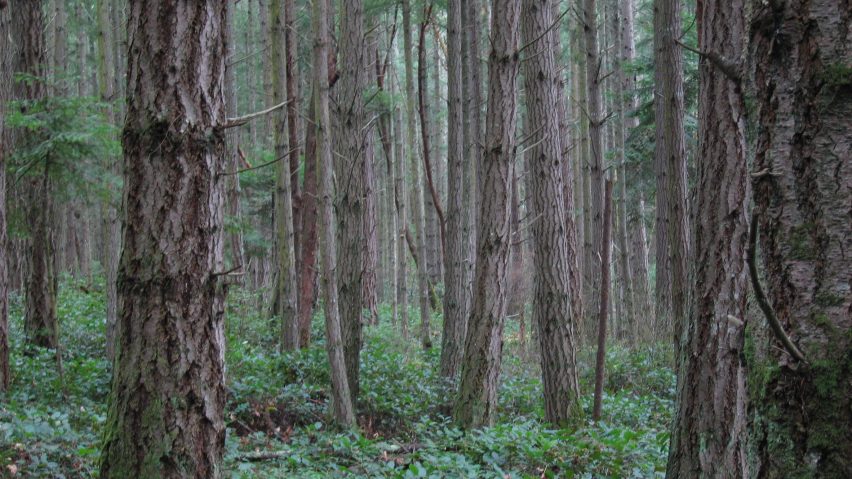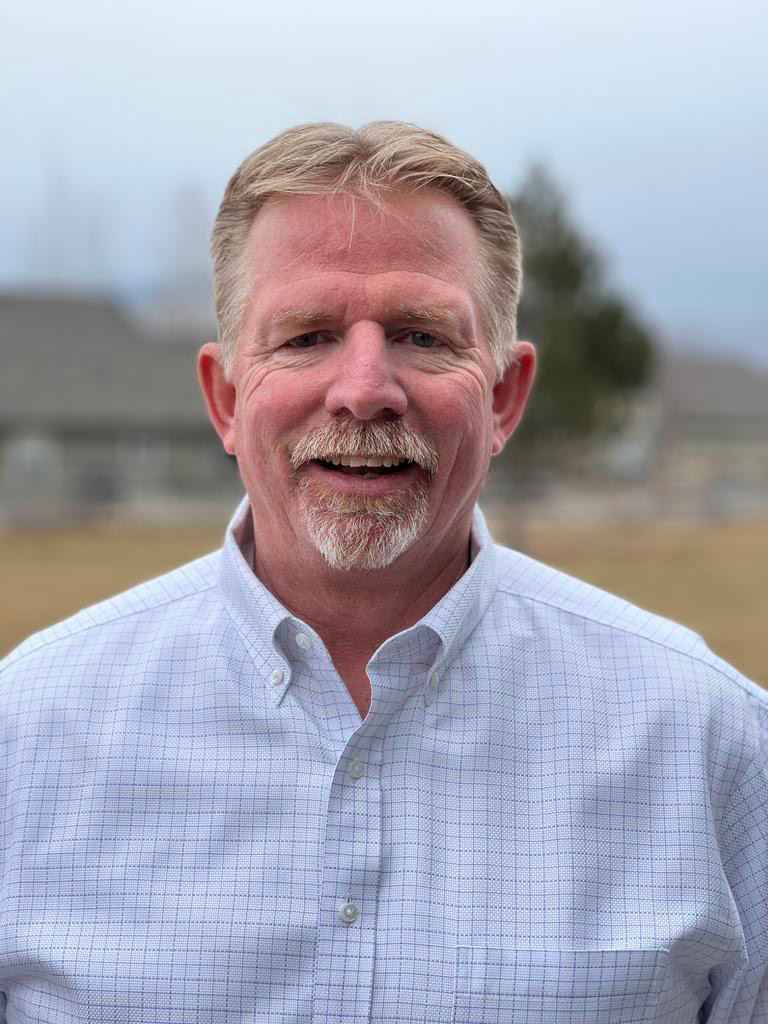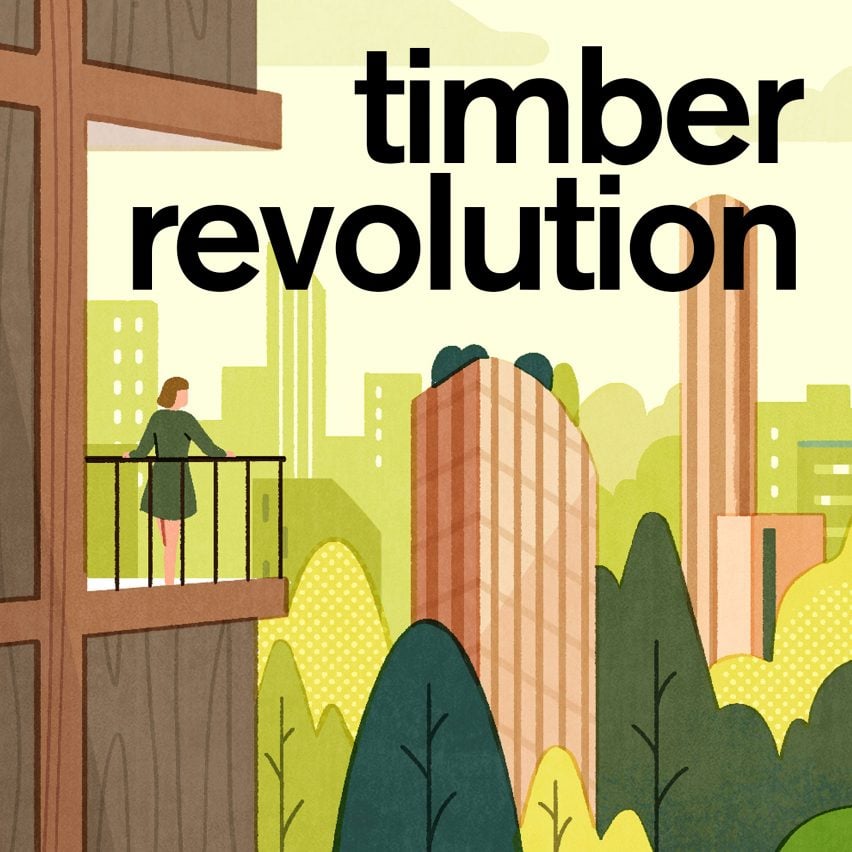
Mass timber should "always start with forest health" says timber industry expert Arnie Didier
Increasing use of mass timber in architecture is driving good forest management practices in the United States, says Forest Business Network co-founder Arnie Didier in this interview as part of our Timber Revolution series.
Mass-timber manufacturers are seeking to emphasize the benefits for forestry and resource management in conversations with politicians and the construction industry as they try to encourage take-up, according to Didier.
"The story always starts with forest health," he told Dezeen.

Mass timber is an engineered wood product that consists of broken-down wood bound together to create strong structural components. It has been lauded for its potential in lessening dependence on non-renewable materials like concrete and steel.
Because mass timber can use small and lower-quality trees than traditional wood construction, it creates a commercial incentive for harvesting and utilizing these trees in a way which is sustainable and helps the surrounding forest thrive.
Didier is one of the co-founders of the Forest Business Network (FBN), an organization that connects agricultural, infrastructural and governmental organizations involved in forestry. It holds a yearly conference on mass timber in Oregon and publishes an annual study on the sector.
The 2022 mass timber study released by FBN outlines how, in order to manage fires, forest stewards often strip trees and implement controlled burns so as to thin out the stock and preserve the more mature trees traditionally used in timber products.
Mass timber plays into selective harvesting
In the past, the profits gained from harvesting the smaller trees were not worth the cost of extraction, and much of the lumber was considered unusable in traditional timber building projects, the report states.
This meant that the carbon sequestered by smaller trees would be re-released into the atmosphere as they were burned.
Didier noted that forest density can be "overwhelming" in much of North America, and selective harvesting – as opposed to clear-cutting – can give an "outlet" for some of the smaller trees.
"Selective cutting makes a lot of sense when you're taking out smaller trees to allow the bigger trees to grow," said Didier. "And you know, mass timber plays a big hand in that."
Mass timber "is a boutique industry"
Lech Muszynski, a professor in the Wood Science & Engineering department at Oregon State University and a contributor to the FBN report, agreed that converting otherwise-useless trees removed from reserve lands to manage fires into mass timber could incentivize better practices.
By utilizing wood that would otherwise get burned, mass timber allows for more carbon to be sequestered, Muszynski told Dezeen.
He referenced a Washington State company called Vaagen Brothers Lumber, which proposed a project to help federal forest management initiatives by extracting wood.
However, Muszynski believes that the potential for mass timber to completely change forestry practices is still a way off.
"Nothing related to mass timber policies has great impact because this is a boutique industry," he said.
Nevertheless, the demand for mass timber is beginning to outpace the production capacity of producers in North America.
"Entrepreneurs win the day"
"You're having these entrepreneurs coming up with that formula that can utilize some of the smaller timber to produce you know, bigger and better and stronger panels," said Didier.
Legacy timber manufacturers are adapting to the practice, he said, but entrepreneurs and tech companies are driving the real innovation.
"Entrepreneurs win the day," he said."Any new kind of industry is a struggle, but we're seeing more and more people surface that are looking at it as a viable business interest."
"They're actually doers," he continued. "They're not pontificators, they're doers in the industry, and that's pretty powerful."
Didier also said that willingness from tech giants such as Google, Microsoft, Facebook and Amazon to use timber in their buildings is a driving force in the wider acceptance of the product.
"They liked the outcomes of the building for mass timber," he said of the companies.
In addition to forestry professionals and producers, Didier's organization also works with members of the construction industry as well as politicians who ultimately decide the building codes.
"What we're hearing and seeing is they do a project and they're finding out that it actually is really easy to work with. It's really fast, it looks great," he said.
"People love the story. That's kind of been a game-changer when you get a lot of these construction companies small and big, that have started to use it."
Politicians' views of mass timber have also been changing in the last few years. Organisations like Woodworks – a partner in the Mass Timber Conference – and the Softwood Lumber Board liaising with governmental bodies to promote the use of mass timber for initiatives like president Obama's mass timber competition.
Didier pointed to the championing of the product by Oregon senator Jeff Merkley as well as Oregon governor Tina Kotek, noting that there were substantial national building code changes in 2021 that have made it easier to build big with wood.
The top photo is by Tom Harpel.

Timber Revolution
This article is part of Dezeen's Timber Revolution series, which explores the potential of mass timber and asks whether going back to wood as our primary construction material can lead the world to a more sustainable future.